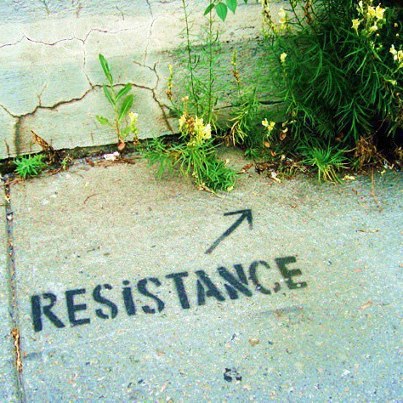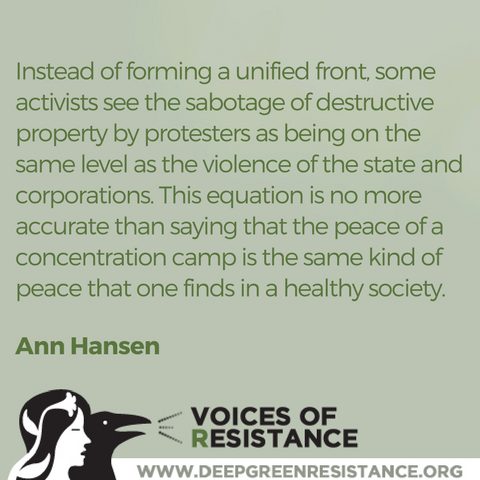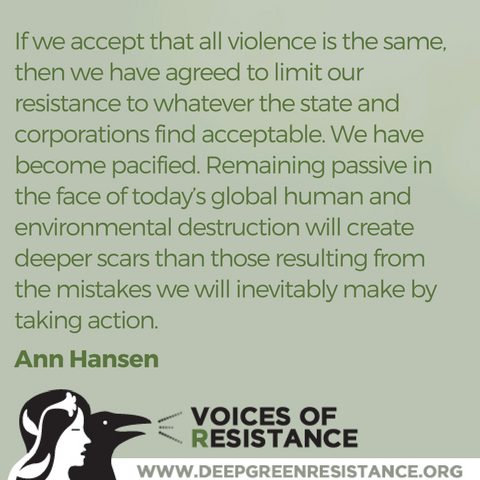This is the twenty-second installment in a multi-part series. Browse the Protective Use of Force index to read more.
In Part One (read here), I explored the importance of viewing our resistance as acts of self defence and counter violence. I also discussed the two main arguments against using force, and that the moral question needs to be reframed. The decision about what strategy and tactics to use depends on the circumstances, rather than being wedded to one approach out of a vague ethical dogma.
Peter Gelderloos, an anarchist writer, reframes the question of if tactics are violent or not, by asking if the tactics are liberating when we are meant to be obedient consumers. Does the action result in space being reclaimed and held. Examples of this are the Spanish Civil War, Greece uprising of 2008, the Oaxacan state resistance to the Mexican government in 2006, and Hamburg 1986/7. [1]
If those fighting for a better world are going to be successful, then we all need to resist in the ways that make sense to each individual or group, and play to their strengths. At the same time, activists need to respect others ways of resisting, and work out how all these different methods can strengthen each other to build a movement. This approach is known as “Diversity of Tactics,” or more recently “Full Spectrum Resistance” or a “Holistic Resistance Movement.” [2]
Gelderloos describes how nonviolence fundamentalists view a social conflict as a chessboard where the movement’s leaders try to see or control all the pieces. The diversity of tactics perspective sees it is as a vast, opaque space with countless actors, whose needs are not always compatible as the struggle shifts. This involves agreeing zones for different tactics to be employed so tens of thousands of people can surround a summit and blockade; or disrupt with a combination of peaceful marches, sit-ins, lock-ons, tripods, barricades, riots in nearby business districts to draw of police, and then fight with them in the streets. [3]
Gelderloos explains that approach has been successful, but it requires all the groups with different tactics to work together. [4] It also requires the protest to not be centrally controlled, and that there be no central focus to the event, but many individuals and groups resisting as they see fit. [5] A recent example is the 2012 Barcelona uprising following a general strike, where several thousand people held space and some fought with the police and temporarily liberated space. [6] However, employing a diversity of tactics approach as part of a nonviolent mass movement campaign can be counterproductive if the campaign needs nonviolence discipline to be successful. If the aim of the nonviolence campaign is create a dilemma for the authorities or to get them to overreact then it is very important that nonviolence discipline is maintained. This is a very different strategy to the idea of holding space. Both have an important part to place in our resistance depending on the circumstances.
There are a number of different forms of direct action, with varying effectiveness through history. When different types of protest and direct action are combined they can make the overall movement for change more effective by opening avenues of resistance that are not easily co-opted or controlled by the state. Those that fail to see the importance of supporting all of the direct action tactics available, weaken the movement. To quote Ann Hansen from the Canadian militant group Direct Action: “Instead of forming a unified front, some activists see the sabotage of destructive property by protesters as being on the same level as the violence of the state and corporations. This equation is no more accurate than saying that the peace of a concentration camp is the same kind of peace that one finds in a healthy society. If we accept that all violence is the same, then we have agreed to limit our resistance to whatever the state and corporations find acceptable. We have become pacified. Remaining passive in the face of today’s global human and environmental destruction will create deeper scars than those resulting from the mistakes we will inevitably make by taking action.” [7]
Nonviolence advocates such as Marty Branagan generally don’t support the use of diversity of tactics, and some argue that the use of force by some discredits everyone at an action. In their view, if the majority of a group has decided to use nonviolent methods, then why “should they be forced to allow violent tactics to taint their protest?” [8]
Gelderloos respects those whose concept of revolution is to work for peace and follow a philosophy of doing no harm. He argues that the basis of respect is recognising the autonomy of others, and allowing and supporting them to fight for freedom in their own way. It’s appropriate to criticise those we respect, but not to try to make them become more like us: “the purpose of that criticism is to learn collectively at the point of conflict between our differences, not to turn them into Black Bloc anarchists.” [9]. He believes that we are all suited to different tasks, based on our temperament, abilities, experience and ideas about revolution. All of them are necessary; it’s a disservice to revolutionary principles to rank some of them over others. Glorifying illegal and combative tactics would create the same dynamic in which nonviolence fundamentalists create by only considering nonviolent methods. [10]
The legitimacy of nonviolent fundamentalists’ ideology must be constantly reviewed and assessed to determine if it is capable of achieving the social change it promises. Its lack of success does not mean abandoning all forms of nonviolent struggle, and only pursuing armed struggle. Instead we need to consider and develop the broadest possible range of thinking and action to resist the state. Rather than view different forms of resistance as separate components, they should be viewed as a continuum of activity from petitions, to demonstrations and protests, to the use of force in self defence. [11]
Jeriah Bowser offers a framework for resistance that includes both violent and nonviolent tactics. It offers a four-stage path for individuals from a disengaged pacifist to an engaged, empowered, and dedicated view of resistance towards oppression.
- The first stage is “colonization,” which most people experience when they cannot actualise their dreams, goals and desires.
- The second stage is “decolonization,” where individuals engage in an activity that breaks their view that they are weak and subservient, so they now feel empowered to “stand up for themselves.”
- Stage three is “active nonviolence,” with the use of empowered, creative and effective alternatives to passivity or violence.
- The final stage is “total liberation” – “a world built on the principles of love, community, connection, respect, mutual aid, egalitarianism, voluntary participation, and freedom where all living beings on the earth are free from oppressive violence.” [12]
It’s important to recognise that civilisation has stolen and hidden the history of rebellions and revolutions and the knowledge of the methods to carry them out. In simpler times, those suffering under oppression could rise up, and knew how to sabotage the machines and infrastructure of those in power. I echo Gelderloos in his call to relearn these important skills and knowledge. [13]
If we look at history we can see that the general pattern of movements is to start off nonviolently. If this does not prove effective, and state repression increases, some carry out more militant resistance. Examples of this would be the Suffragettes, African National Congress and Umkhonto we Sizwe in South Africa, the French Resistance, Irish Revolution, resistance to the oil companies in the Niger Delta – see Resistance Profiles for Ken Saro-Wiwa and Movement for the Survival of the Ogoni People, and later, Movement for the Emancipation for the Niger Delta and Niger Delta Avengers. That is the path we’re on in defense of the earth and we are at the early stages of militancy being considered justifiable for environmental protection.
With regard to thinking about new tactics, Derrick Jensen states:
“Bringing down civilization first and foremost consists of liberating ourselves by driving the colonizers out of our own hearts and minds: seeing civilization for what it is, seeing those in power for who and what they are, and seeing power for what it is. Bringing down civilization then consists of actions arising from that liberation, not allowing those in power to predetermine the ways we oppose them, instead living with and by–and using–the tools and rules of those in power only when we choose, and not using them when we choose not to. It means fighting them on our terms when we choose, and on their terms when we choose, when it is convenient and effective to do so. Think of that the next time you vote, get a permit for a demonstration, enter a courtroom, file a timber sale appeal, and so on. That’s not to say we shouldn’t use these tactics, but we should always remember who makes the rules, and we should strive to determine what ‘rules of engagement’ will shift the advantage to our side.” [14]
We in DGR are committed to the protective use of force and would never condone anything that results in any living being suffering. We have a long way to go convincing people that using force in defense of the living world is justified. It will mean convincing one person at a time. We need to build a movement that has this as its goal and then for that movement to act in defense of the living world.
Finally, I want to quote Mark Boyle’s vision of peace in our world:
“What I am searching for is an unrecognisable and long-since forgotten brand of peace. One which is free from the systemic violence that invisibly infiltrates almost every aspect of the ways by which we civilised folk meet our needs and insatiable desires. A type whose essence disrupts our tamed minds and reveals itself as much in the calm tranquillity of an ancient woodland as it conceals itself within the timeless chase between wolf and doe. A peace strangely imbued in a lioness’s ferocious defence of her cubs and the trilateral struggles of bear and salmon and streams, all of whose stories and ancestral patterns weave together the majestic fabric of The Whole and keep its harmony from unravelling at the seams. The peace I seek…is the peace of The Wild, one free from civilised, urbane notions of violence, nonviolence and pacifism.” [15]
Endnotes
- The Failure of Nonviolence, Peter Gelderloos, 2013, page 215-236
- Drinking Molotov Cocktails with Gandhi, Mark Boyle, 2015, page 5/6
- The Failure of Nonviolence, page 237
- The Failure of Nonviolence, page 238
- The Failure of Nonviolence, page 239-247
- The Failure of Nonviolence, page 265-6
- Direct Action: Memoirs of an Urban Guerrilla, Ann Hansen, 2001, page 471
- Global Warming: Militarism and Nonviolence, The Art of Active Resistance, Marty Branagan, 2013, page 132
- The Failure of Nonviolence, page 241
- The Failure of Nonviolence, page 242
- Pacifism as Pathology, Ward Churchill, page 1998, page 94
- Elements of Resistance: Violence, Nonviolence and the State, Jeriah Bowser, 2015, page 97-114, read online
- The Failure of Nonviolence, page 275
- Endgame Volume 1, Derrick Jensen, 2006, page 252
- Drinking Molotov Cocktails with Gandhi, page 3
To repost this or other DGR original writings, please contact newsservice@deepgreenresistance.org




